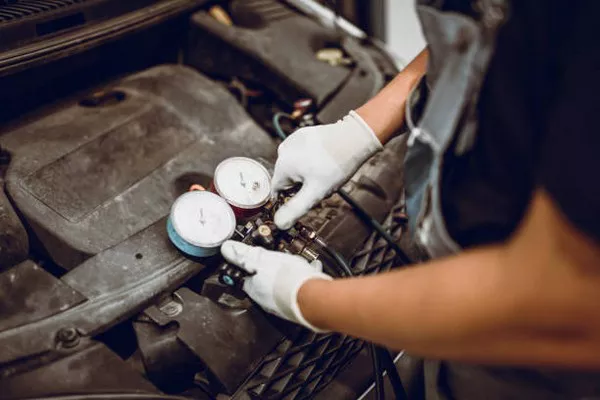Automotive painting is a delicate art that requires precision, skill, and the right equipment. Among the essential tools for achieving a flawless paint job, an air compressor plays a pivotal role. The air compressor’s size and capacity significantly impact the quality and efficiency of the painting process. In this article, we delve into the world of air compressors and explore the optimal size for painting a car with professional results.
Understanding Air Compressors for Automotive Painting
An air compressor is a device that converts power, usually from an electric motor or a gasoline engine, into kinetic energy stored in compressed air. This pressurized air is then used to power various pneumatic tools, including spray guns for automotive painting. The forceful release of compressed air helps disperse paint particles in a controlled and even manner, creating a smooth and uniform coat on the vehicle’s surface.
For automotive painting, an air compressor’s capacity, measured in cubic feet per minute (CFM), and its pressure output, usually measured in pounds per square inch (PSI), are crucial factors. These two parameters determine the compressor’s ability to supply sufficient and consistent airflow to the spray gun, thereby affecting the quality of the paint application.
Finding the Ideal Size
When it comes to selecting the right air compressor size for painting a car, the adage “bigger is better” doesn’t always hold true. A common misconception is that the largest compressor available will deliver the best results. In reality, the ideal size depends on the type of paint job, the spray gun being used, and the intended scope of the project.
1. Consider the Paint Job’s Scale
Before choosing an air compressor, one must assess the scale of the paint job. If the task involves a complete car respray, a higher CFM rating is essential to ensure consistent and efficient paint delivery. On the other hand, for touch-ups or small repairs, a smaller compressor might suffice.
2. Analyze the Spray Gun Requirements
Different spray guns have varying CFM and PSI requirements. Some guns operate optimally at lower pressures, while others require higher pressure settings to achieve the desired atomization of paint particles. It’s crucial to review the manufacturer’s recommendations for the spray gun being used and select a compressor that can supply the necessary airflow and pressure.
3. Evaluate the CFM and PSI Ratings
A rule of thumb for automotive painting is that a compressor should provide at least 1.5 times the CFM required by the spray gun. For instance, if a spray gun requires 10 CFM, a compressor with a rating of at least 15 CFM is advisable. Similarly, the PSI rating should be sufficient to meet the demands of the spray gun, typically falling between 30 to 50 PSI for automotive painting.
4. Balancing Power and Portability
While a higher CFM and PSI rating ensures optimal paint delivery, it’s important to strike a balance between power and portability. Extremely powerful compressors can be bulky and heavy, making them less practical for smaller paint jobs or situations where mobility is a concern. Evaluating the compressor’s weight, size, and mobility features is crucial, especially for automotive painters who work in different locations.
5. Noise Considerations
Another aspect to consider is the noise level produced by the compressor. High-capacity compressors often generate more noise, which can be a concern if you’re working in a residential area or a shared workspace. Some compressors are designed with noise reduction features, making them more suitable for indoor or noise-sensitive environments.
Conclusion
Selecting the right air compressor size for painting a car involves a careful analysis of the project’s scope, the spray gun’s requirements, and the desired level of efficiency. While a larger compressor can provide ample power, it’s not always necessary and might even be impractical for certain situations. Ultimately, achieving professional-quality automotive painting requires a well-balanced consideration of CFM, PSI, mobility, and noise factors. By understanding these parameters and tailoring the choice of air compressor to the specific needs of the project, painters can ensure consistent, flawless, and efficient paint application every time.

